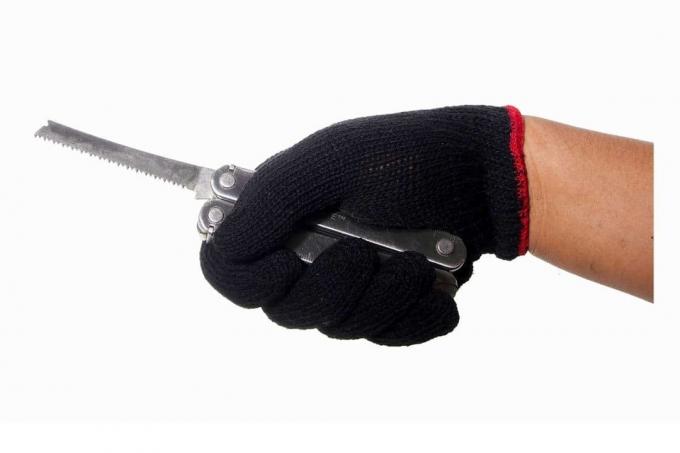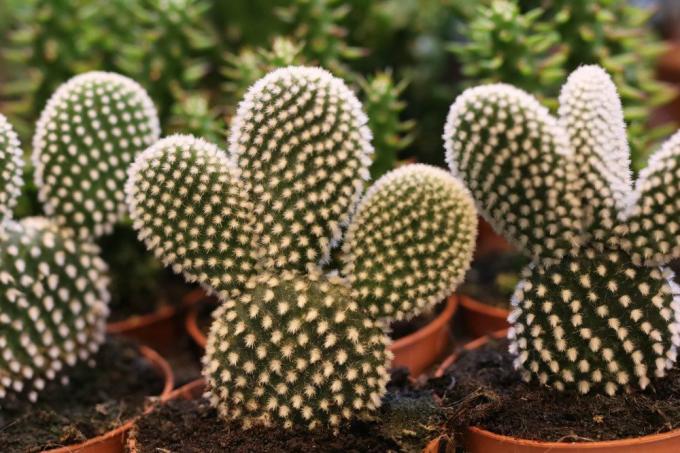
table of contents
- Optimal time
- Appropriate tools
- Space and resources
- Cutting rules
- Cutting off a cactus: instructions
- Plant offshoots
- Maintain cactus
- frequently asked Questions
A cactus touches the ceiling or has a damaged arm? A cut is the solution! Offshoots can also be obtained with a sharp knife. But the cutting of the cactus must be done carefully.
In a nutshell
- Cut off the cactus in the warm season
- Use a sharp, disinfected knife or saw
- Sprinkle the cuttings with charcoal ash and let them dry for a few weeks
- in potting soil or Plant low-humus cactus soil
- Place in a bright and warm place, water little, fertilize sparingly in spring and summer
Optimal time
Cacti are known for having thick, fleshy arms. Accordingly, the wounds that arise after cutting both on the cut off part and on the remainder are also large. The moist interfaces take time and dry air to heal completely. The cutting should therefore ideally take place in the warm time of the year, sometime between March and July. No action should be taken later. Especially when cuttings are cut, as they still need a few warm weeks after planting.
Appropriate tools
A clean, smooth cut is an absolute must for the cactus to survive the procedure in good health. Unlike other plants, secateurs cannot be used with fleshy cacti. Possible cutting tools are:
- scalpel
- sharp knife
- Saw knife (for woody cactus arms)
- possibly. a good pruning saw

Tip: The cutting tool must be thoroughly cleaned and disinfected before and after each cut, for example with alcohol. This measure is at both suffer as well as healthy cacti.
Space and resources
Is the cactus big or long, you may not be able to cut it off in place. Choose a suitable place where you can lay it flat. It can also be useful to approach this task in pairs. Also get these useful utensils:
- Charcoal ash for the care of cuts
- cleaned, disinfected cutting board
- gloves
Theoretically, it can also be done without wound treatment, but it significantly increases the chances of healing. Charcoal ash minimizes the flow of sap at the interface so that it can dry out more quickly.
Cutting rules
In order to optimally select the interface, you should take a closer look at the cactus. At least 1-2 dormant eyes should remain on the trunk so that new growth is secured. The sleeping eyes are usually located near spines or Leaves.
- shorten long arms at the narrowest point
- unbranched Columnar cactus Cut back to the end of the trunk
- at Outdoor cacti Make the cut at a slight angle
- Rainwater can drain away more easily
- Cut the indoor cacti horizontally
- Cut rotten areas back into healthy, light-colored tissue

Cutting off a cactus: instructions
In the following instructions we assume a very large columnar cactus, as it represents the greatest challenge. The instructions also apply to all other cacti. slightly modified.
- Have cutting tools and other aids within easy reach.
- Take the cactus out of its planter.
- Put the plant pot in a plastic bag and tie it tight. So the earth cannot fall out.
- Carefully lay the cactus flat on the ground.
- Slide a board under the cactus where you want it to be sawed off.
- Cutting or saw up the cactus.
- Sprinkle wood ash on the interfaces.
- Put the shortened cactus back in its place. Before that, there is the opportunity to repot the desert dweller, which has become more manageable, if necessary.
- Place the cut cactus part in a warm and dry place so that the cut can dry out completely before planting.
Tip:To dry up, place the cut cactus tip upright in a sturdy container. It can be damaged over time when lying down.
Plant offshoots
The cactus may only be planted in the ground when the interface has dried up completely. Otherwise there is a great risk that it will be due to moisture too rotten begins. Drying is not only compulsory for large, cut tips, but also for every small one Offshoot.
- Use a special, low-humus cactus substrate
- First root small offshoots in potting soil
- Water for the first time only after about 10 days
- After rooting, transplant into the final pot

Maintain cactus
Both the newly propagated and the "old" Succulent plant need a nursing program that takes their specific needs into account. Then they can optimally recover from the pruning measure and produce new growth.
- find a bright and warm location
- Water sparingly and with little lime
- Let the earth dry between two waterings
- Fertilize every four weeks in spring and summer
- use a special cactus fertilizer (sparingly)
- allow some species to hibernate
- repot regularly

frequently asked Questions
Don't worry, cacti are not poisonous. Some species even offer us edible parts. Nevertheless, caution is advised when cutting, as injuries caused by spikes can become uncomfortably inflamed.
Cacti love it warm and bright. But not all species have a preference for blazing sun! Whether or not a specimen is allowed in the sun should be clarified before purchasing. If the type of cactus is not known, the color can serve as a guide. The darker it is, the darker the location can be.
This method of rooting is not suitable for cacti. Water does not produce new roots, but causes the offshoot to rot quickly.
